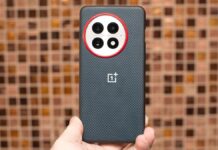Tech startup connects to two satellites in orbit from Earth via Bluetooth — using off the shelf chip and a software update
published 11 May 2024
That’s a distance of 600km

Most of us use Bluetooth every day for tasks such as streaming audio, sharing files, connecting to devices, and making hands-free calls.
That’s because Bluetooth technology is typically designed for short-range communication between devices, and while the first generations had a very limited range of up to 30 feet, it can now achieve over 200 feet in real-world conditions.
Tech startup Hubble Network, which has secured a $20 million Series A funding round from the likes of Transpose Platform and Y Combinator, has managed to stretch that even further, making a Bluetooth connection from Earth to space.
Building a network of satellites
As the Hubble Network Blog explains, “On March 4, 2024, from the grounds of Vandenberg Space Force Base, Hubble successfully launched its first two satellites. These aren’t just any satellites; they’ve successfully reached their orbits and managed to receive signals [from Earth] from a simple 3.5mm Bluetooth chip over an astonishing distance of 600 km.” Yes, that’s not a typo. 600 kilometers, which is roughly the same distance from New York City to Boston, or London to Paris.
This development is significant because traditional networks often lag in delivering effective coverage in remote areas, consume too much power, and are prohibitively costly to operate at a global scale. Hubble’s approach directly tackles these problems by enabling standard Bluetooth devices to connect to their satellite network without cellular reception simply with a software update.
Hubble’s global satellite network, which any Bluetooth enabled device can connect to, reportedly delivers global coverage with 20 times less battery consumption and operating costs reduced by a factor of 50. The startup says it can be used for variety of tasks such as wildfire detection, pet, child and elderly safety, environmental monitoring, fleet management, and container and pallet tracking.
Ben Wild, co-founder and CTO of Hubble Network says, “Our innovative approach allows existing Bluetooth-enabled devices to be retrofitted to transmit data to the Hubble Network without any hardware modifications, ushering in a new era of connectivity.”
Are you a pro? Subscribe to our newsletter
Sign up to the TechRadar Pro newsletter to get all the top news, opinion, features and guidance your business needs to succeed!
With nearly five billion Bluetooth devices sold annually, the impact of this breakthrough could be huge. Although the company only has two satellites in orbit at the moment, it plans to add two more by early next year, with 32 additional satellites to follow by Q1 2026.
More from TechRadar Pro
- Japanese scientists close in on petabit-class submarine cable tech
- 6G mobile networks could reach one terabit per second
- Revolutionary Wi-Fi tech that can cover two miles hits key milestone

Wayne Williams is a freelancer writing news for TechRadar Pro. He has been writing about computers, technology, and the web for 30 years. In that time he wrote for most of the UK’s PC magazines, and launched, edited and published a number of them too.

Apple could revive a legendary product it killed 13 years ago — heir to Xserve to run on M2 Ultra silicon according to reports but no sign of Mac OS X Server yet

LLM services are being hit by hackers looking to sell on private info

Quordle today – hints and answers for Saturday, May 11 (game #838)
Most Popular











-
1Quordle today – hints and answers for Thursday, May 9 (game #836)
-
2I ran an entire marathon with a Garmin, an Apple Watch and Strava – here are all the differences
-
3Microsoft might be spooked by Windows 10 user numbers – but will making upgrading to Windows 11 easier be the answer?
-
4Here’s one good reason you may want to ‘downgrade’ your SSD and lose capacity in the process — cheap QLC SSD can be transformed into expensive SLC to improve endurance but it’s not for the fainthearted
-
5Apple iPad Pro M4 event Live blog as it happened: OLED, Air, Pencil and more
-
1Hands on: iPad Pro 13-inch (2024): The impossibly thin king of iPads – and maybe all tablets
-
2Dell cracks down on hybrid working again — computing giant is going to start color-coding employees to show who is coming back to the office
-
310 things Apple forgot to tell us about the new iPad Pro and iPad Air
-
4Apple iPad event 2024 – 9 things we learned from the Let Loose event
-
5Here’s one good reason you may want to ‘downgrade’ your SSD and lose capacity in the process — cheap QLC SSD can be transformed into expensive SLC to improve endurance but it’s not for the fainthearted





